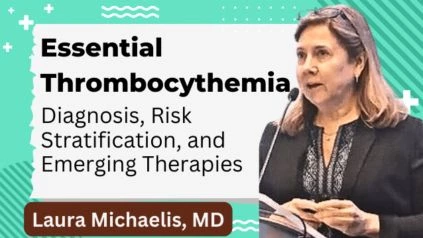By: Allen Wilbanks
Date: September 29/2023
At the conference, Pankit expressed gratitude for another great talk, saying, “Thank you, Pankit for another fantastic talk. It’s my honor now to introduce Laura Michaelis, MD, a leader in myeloid malignancies at ASH and SWAG. Thank you, Laura.”
Laura Michaelis began her presentation by acknowledging her pleasure to be there and shared two important lessons learned so far – the value of presentation slides and the need for humor. She then delved into essential thrombocythemia, emphasizing the critical importance of accurate diagnosis before treatment.
Dr. Michaelis highlighted the significance of thorough diagnostics, especially in triple-negative cases, and the importance of a proper bone marrow biopsy. She explained the key diagnostic characteristics of essential thrombocythemia and its differentiation from pre-fibrotic myelofibrosis.
She also discussed risk stratification and the relevance of prognostic systems in guiding patient counseling. Dr. Michaelis emphasized the importance of assessing thrombosis risk in essential thrombocythemia and touched on emerging insights into clonal hematopoiesis.
In terms of therapy, she mentioned the management of cardiovascular risk factors and the use of cytoreductive agents like hydroxyurea or pegylated interferon when needed, based on individual patient factors and comorbidities.
Dr. Michaelis concluded by mentioning some promising novel therapies under investigation, including LSD1 inhibitors, Navitoclax, and antibodies targeting mutant CalR.
In summary, Dr. Laura Michaelis provided valuable insights into essential thrombocythemia, highlighting the importance of accurate diagnosis, risk assessment, and the potential for novel treatments to improve patient outcomes.

